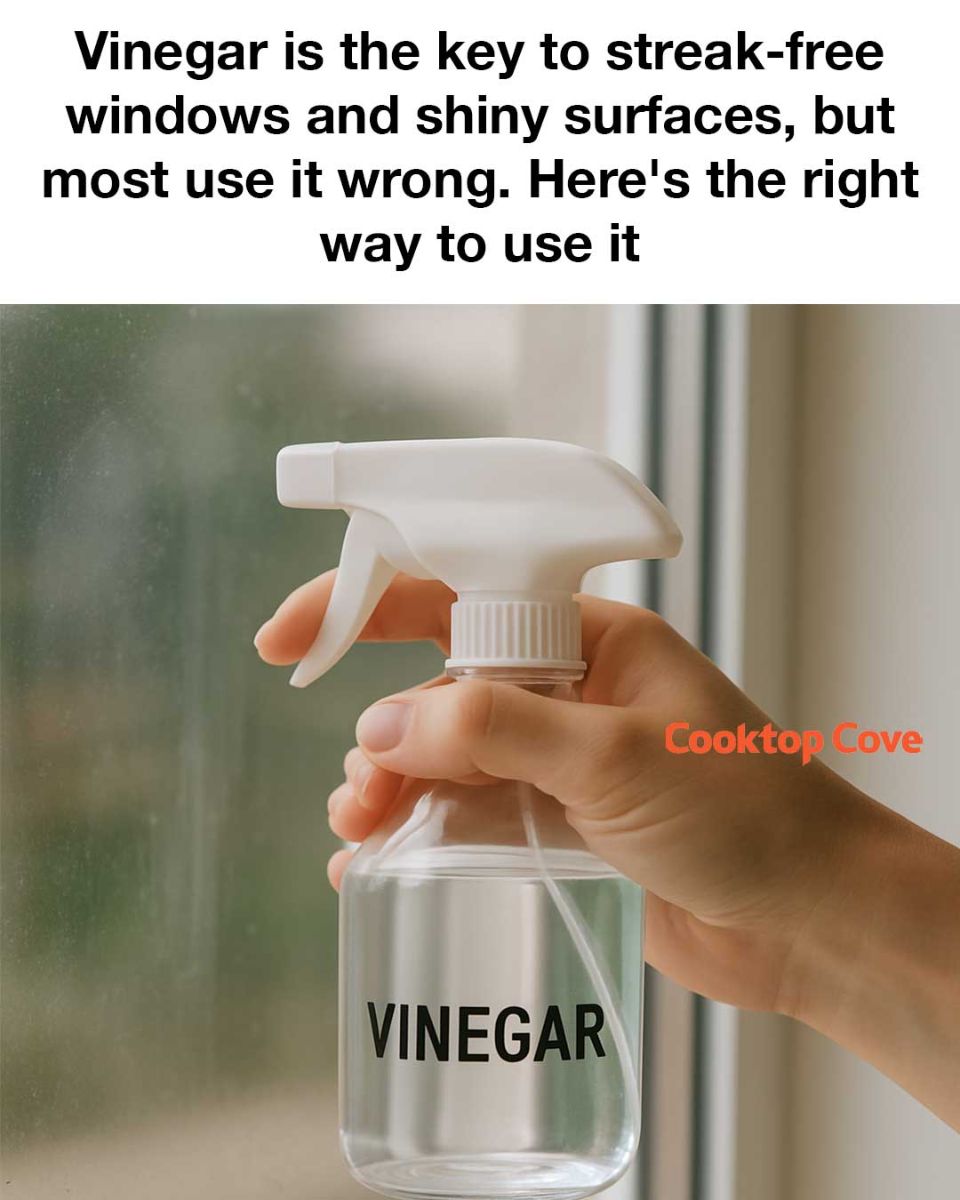Vinegar is the key to streak-free windows and shiny surfaces, but most use it wrong. Here’s the right way to use it
Vinegar has long been touted as a versatile and effective cleaning agent, capable of tackling a wide range of household tasks. Its natural acidity makes it particularly adept at cutting through grime and leaving surfaces sparkling clean. However, many people find that their attempts to use vinegar for cleaning result in streaky windows and less-than-shiny surfaces. This is often due to common misconceptions and improper techniques when using vinegar as a cleaner.
In this article, we will explore the science behind vinegar’s cleaning power, common mistakes people make, and the right way to use vinegar to achieve streak-free windows and shiny surfaces. By understanding the correct methods and tools, you can harness the full potential of vinegar as a natural cleaning solution.
1. The Science Behind Vinegar’s Cleaning Power
Vinegar’s cleaning power comes from its main component, acetic acid, which typically makes up about 5-8% of the solution. This acidity gives vinegar its ability to dissolve mineral deposits, grease, and grime, making it an effective cleaner for a variety of surfaces. The acetic acid in vinegar can break down the bonds between dirt and surfaces, allowing for easier removal.
Additionally, vinegar’s acidic nature makes it a natural disinfectant, capable of killing some bacteria and viruses. While it may not be as potent as commercial disinfectants, vinegar can still reduce the presence of harmful microorganisms on surfaces, contributing to a cleaner and safer home environment.
2. Common Mistakes When Using Vinegar for Cleaning
One of the most common mistakes people make when using vinegar for cleaning is using it undiluted. Full-strength vinegar can be too harsh for some surfaces, leading to damage or discoloration. It’s important to dilute vinegar with water, typically in a 1:1 ratio, to ensure it’s safe for use on most surfaces.
Another mistake is using vinegar on the wrong surfaces. Vinegar should not be used on natural stone surfaces like granite or marble, as its acidity can etch and damage the stone. Additionally, using vinegar on electronic screens or waxed surfaces can lead to damage or a dull finish.
3. The Right Vinegar to Use for Streak-Free Windows
For cleaning windows, distilled white vinegar is the best choice. It is clear, colorless, and has a higher acidity level compared to other types of vinegar, such as apple cider vinegar. The lack of color ensures that it won’t stain surfaces, and its high acidity makes it effective at cutting through grime and leaving windows streak-free.
When purchasing vinegar for cleaning, look for a product with at least 5% acetic acid content. This concentration is sufficient for most cleaning tasks and ensures that the vinegar will be effective without being overly harsh.
4. Preparing the Perfect Vinegar Cleaning Solution
To prepare an effective vinegar cleaning solution for windows, mix equal parts distilled white vinegar and water in a spray bottle. For example, combine 1 cup of vinegar with 1 cup of water. This dilution is gentle enough for most surfaces while still retaining the cleaning power of vinegar.
For particularly stubborn grime or mineral deposits, you can increase the vinegar concentration slightly, using a 2:1 ratio of vinegar to water. However, always test the solution on a small, inconspicuous area first to ensure it won’t damage the surface.
5. The Best Tools to Use with Vinegar for Cleaning
Microfiber cloths are the best tool to use with vinegar for cleaning windows and surfaces. They are highly absorbent, lint-free, and gentle on surfaces, making them ideal for achieving a streak-free finish. Avoid using paper towels, as they can leave lint and streaks behind.
For windows, a squeegee can also be a valuable tool. After applying the vinegar solution with a spray bottle, use a squeegee to remove excess liquid and prevent streaks. Be sure to wipe the squeegee blade with a clean cloth after each pass to avoid transferring dirt back onto the window.
Next Page

